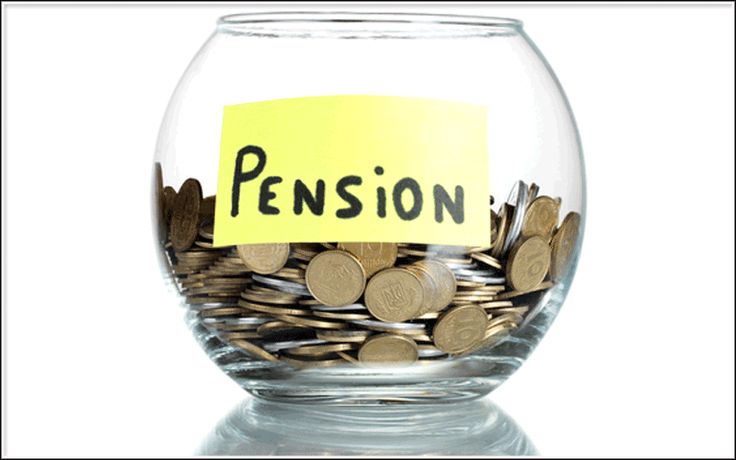Planning for retirement is a crucial step in ensuring financial security in later life. As the UK population ages and life expectancy increases, having a pension plan is becoming increasingly important. Pension plans in the UK are designed to provide individuals with a steady income once they retire, allowing them to maintain their standard of living when they no longer work. Whether you are self-employed, employed, or a business owner, understanding the types of pension plans available and how to make the most of them is essential for securing your financial future.
This comprehensive guide will explore everything you need to know about pension plans in the UK, including the types of pensions available, the benefits, how to choose the right plan for you, and much more.
What Are Pension Plans?
A pension plan is a financial product that provides income during retirement. Pension plans are designed to ensure that you have enough savings when you retire, allowing you to live comfortably without relying solely on the state pension. The money you contribute to a pension plan is invested over time, and the goal is to build a pot of money that can be accessed once you retire.
There are different types of pension schemes available in the UK, including workplace pensions, personal pensions, and state pensions. Each of these pension plans works in slightly different ways, and the best option for you will depend on your circumstances and retirement goals.

Types of Pension Plans in the UK
The UK offers several types of pension schemes, each with its own rules, benefits, and tax advantages. Let’s explore the most common types of pensions available to UK residents.
1. State Pension
The State Pension is a government-backed pension scheme that provides a basic income in retirement to people who have paid enough National Insurance (NI) contributions throughout their working life. To qualify for the full State Pension, you must have 35 qualifying years of NI contributions. The amount you receive depends on how much you’ve paid into the system.
As of 2025, the full State Pension is £179.60 per week. However, if you have fewer than 35 years of contributions, you will receive a reduced amount. The State Pension is paid out every four weeks and is taxable. While the State Pension provides a safety net, it is unlikely to be enough to support a comfortable retirement on its own, which is why many people opt to contribute to other pension plans.
2. Workplace Pensions
A workplace pension is a pension scheme that is set up by your employer to help you save for retirement. In the UK, employers are legally required to offer a workplace pension to eligible employees. The employer and employee both contribute to the pension, and the money is invested to build your pension pot over time.
There are two main types of workplace pensions:
- Defined Contribution (DC) Pensions: With a DC pension, both you and your employer contribute a percentage of your salary to the pension fund. The amount you receive in retirement depends on how much you’ve contributed and the performance of the investments.
- Defined Benefit (DB) Pensions: A DB pension is a scheme where you are guaranteed a certain level of income in retirement, based on factors such as your salary and years of service with the employer. DB pensions are less common today but still exist in some public sector jobs.
Under the automatic enrolment system, employees are automatically enrolled into a workplace pension scheme unless they choose to opt out. The minimum contribution rate for workplace pensions in the UK is 8% of your salary, with at least 3% coming from your employer.
3. Personal Pensions
A personal pension is a type of private pension plan that individuals can set up themselves. Personal pensions are typically offered by insurance companies, banks, and other financial institutions. You can contribute to a personal pension plan on a regular or lump sum basis, and the funds are invested in a variety of assets, such as stocks, bonds, or property.
The most common types of personal pensions are:
- Stakeholder Pensions: These are a type of personal pension that has lower charges and offers more flexibility. Stakeholder pensions are suitable for those with a small income who want to make regular contributions towards their retirement savings.
- Self-Invested Personal Pensions (SIPPs): SIPPs offer more control over your investments, allowing you to choose specific assets to invest in. SIPPs are ideal for experienced investors who want to manage their own pension fund.
Personal pensions can be used by self-employed individuals, those who do not have access to a workplace pension, or anyone looking to supplement their retirement savings.
4. Self-Invested Personal Pensions (SIPPs)
A SIPP is a type of personal pension plan that offers more flexibility and control over investment choices. With a SIPP, you can invest in a wide range of assets, including stocks, shares, bonds, and even commercial property. SIPPs are typically used by individuals who want to take a hands-on approach to managing their pension and are more familiar with investment strategies.
5. Group Personal Pensions
Group personal pensions are similar to individual personal pensions, but they are set up by an employer to offer pension benefits to employees. Employers usually negotiate lower charges for employees, and employees can contribute through payroll deductions. This type of pension plan combines the benefits of a personal pension with the convenience of workplace contributions.

How Much Do You Need to Save for Retirement?
The amount you need to save for retirement depends on various factors, including your desired lifestyle, the age at which you want to retire, and your other sources of income. A good rule of thumb is that you should aim to replace around 50-70% of your pre-retirement income to maintain your standard of living.
The earlier you start saving, the better. The power of compound interest means that the more time your money has to grow, the larger your pension pot will be by the time you retire.
1. Estimating Your Pension Pot
To estimate how much you need to save for retirement, use a pension calculator. These calculators allow you to input your age, income, and how much you plan to contribute to your pension plan to estimate how much you will have saved by the time you retire. Many pension providers in the UK offer free online pension calculators.
2. Consider Additional Income Sources
In addition to your pension, it’s important to consider other sources of income in retirement, such as rental income, savings, or other investments. A diverse income stream can help ensure that you maintain your desired lifestyle once you stop working.
Pension Contributions and Tax Benefits
Pension contributions in the UK come with significant tax advantages, making them one of the most tax-efficient ways to save for retirement.
- Tax Relief on Contributions: When you contribute to a pension, you receive tax relief. This means that the government will add money to your pension, effectively boosting your contributions. For example, if you contribute £80 to your pension, the government will add £20, making the total contribution £100.
- Higher Rate Tax Relief: If you’re a higher-rate taxpayer, you can claim additional tax relief on pension contributions. For example, if you pay 40% tax, for every £100 you contribute, the government will add £40.
- Annual Allowance: The annual allowance is the maximum amount you can contribute to your pension each year while still receiving tax relief. For most people, the annual allowance is £40,000, but it may be lower if you earn over £200,000 a year.
How to Choose the Right Pension Plan
Choosing the right pension plan depends on your individual circumstances, retirement goals, and financial situation. Here are some factors to consider when selecting a pension plan:
1. Employer Contributions
If you have access to a workplace pension, make sure you take full advantage of any employer contributions. This is essentially free money, and it’s one of the best ways to build your pension pot.
2. Fees and Charges
Different pension plans have different fees. Look for plans with low fees, as high charges can significantly erode your returns over time. Always compare the fees of different pension providers to ensure you’re getting good value for your money.
3. Investment Options
Consider the range of investment options offered by the pension plan. If you’re using a SIPP or personal pension, you may have more flexibility to choose investments that align with your risk tolerance and financial goals.
4. Flexibility
Some pension plans offer more flexibility than others. For example, SIPPs offer a wider range of investment options, while workplace pensions may have limited investment choices. Choose a plan that fits your retirement strategy.

Conclusion
Pension plans in the UK are essential for ensuring financial security in retirement. With a range of options available, including the state pension, workplace pensions, personal pensions, and SIPPs, there is a pension plan to suit everyone’s needs. The key to a successful pension strategy is starting early, contributing regularly, and making the most of the tax advantages available. By carefully selecting the right pension plan for your circumstances, you can build a substantial retirement fund that will allow you to live comfortably in your later years.
Remember, it’s never too early to start planning for retirement. The more you save now, the more you will have in the future. Take advantage of the resources available, such as pension calculators, and consult with financial advisors to ensure your pension plan is on track.
